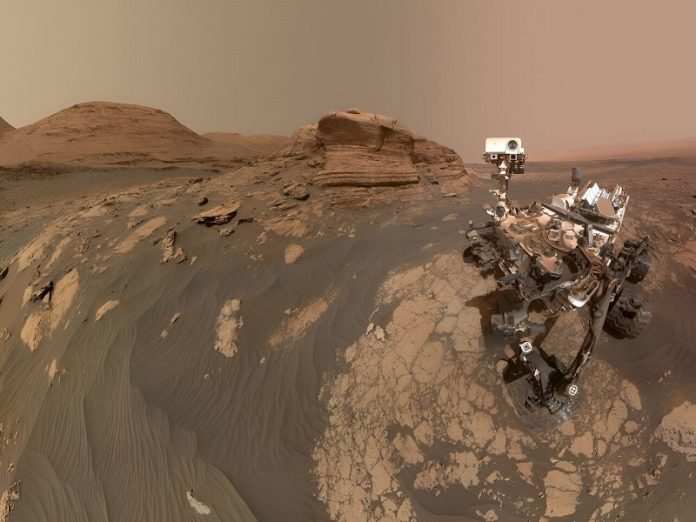
Mars has always been a fascinating planet for us.
We’ve sent robots to explore it, and some of the latest discoveries might just hint at a wetter past.
Imagine Mars not as a dry, red planet, but one with flowing rivers just like Earth!
Benjamin Cardenas, a geoscience expert at Penn State, and his team have made an exciting discovery.
They say that many craters we see on Mars today might have been rivers long ago!
“It seems Mars could’ve been a planet filled with rivers,” said Cardenas. This means the environment on ancient Mars might have been right for life.
In a recent study, the team used computer models to understand how Mars has changed over thousands of years.
They wanted to figure out if certain shapes and patterns on Mars – called bench-and-nose landforms – were old riverbeds. And guess what? They found out that they likely are!
The really cool part is how they did this. They trained their computer using a mix of satellite images, photos from the Curiosity rover, and even old 3D scans from the bottom of the Gulf of Mexico on Earth.
These 3D scans, taken by oil companies 25 years ago, helped them understand the layers and history of rocks.
By combining all this information, they discovered that the common shapes we see on Mars today, which were never thought to be old rivers, actually could be. Cardenas mentioned, “What we’re seeing on Mars isn’t just a static picture. It’s a story of a planet that has changed over time.”
But haven’t we known about water on mars before?
Yes, but not like this. Earlier, researchers saw patterns on Mars they thought might be leftovers from old rivers. These were called “fluvial ridges.”
But Cardenas and his team have found evidence of rivers in places on Mars where no one had spotted them before! They found these river signs in bench-and-nose landforms, which were not connected to rivers in any previous research.
This means there could be even more river traces hiding on Mars. Cardenas pointed out, “On our planet, rivers are crucial. They support life and move essential nutrients around. If Mars had rivers like this, it might have been a place where life could exist.”
Earth’s past helps understand Mars
One of the most interesting parts of this research is how the team used old data from Earth. Remember those 25-year-old scans of the Earth’s seabed?
They played a big role. The team used these scans to create a computer model that behaved like Mars.
When they ran their simulations, they found patterns that looked just like what the Curiosity rover saw on Mars. This connection between Earth’s past and Mars’s mysteries is truly amazing.
This research paints a different picture of Mars. It suggests that Mars might have had many more rivers than we first thought.
“This gives us hope about ancient life on Mars,” said Cardenas. “It shows a Mars that once had the right conditions for living beings.”
In simple words…
Mars, the red planet we often think of as dry and barren, might have had a watery past filled with rivers.
Using smart computers, old data from Earth, and the latest images from a rover, scientists are piecing together a story of a different Mars.
One where water flowed, rivers carved the land, and maybe, just maybe, life could have existed.
Follow us on Twitter for more articles about this topic.



